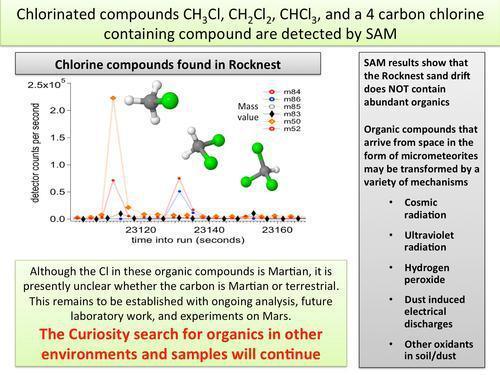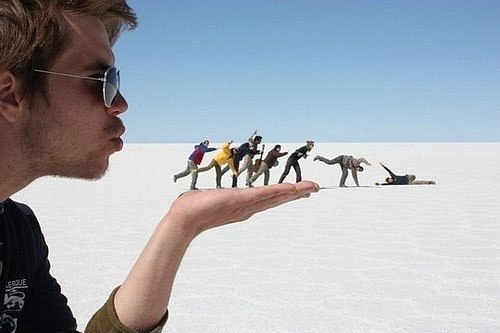Peter Cawdron's Blog, page 19
December 3, 2012
Mars Curiosity at Rocknest
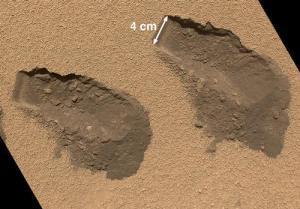 NASA scientist John Grotzinger got himself in hot water when he said the Mars Curiosity team had some “some exciting new results,” that was “one for the history books.” NASA quickly downplayed the whirlwind of speculation that arose, and yesterday released their results.
NASA scientist John Grotzinger got himself in hot water when he said the Mars Curiosity team had some “some exciting new results,” that was “one for the history books.” NASA quickly downplayed the whirlwind of speculation that arose, and yesterday released their results.
Although Grotzinger has not clarified the reason for his comments, it seems there are two points that could have generated his excitement. The first is that the ratio of water in the sample was higher than expected.
Given the arid nature of the Martian landscape, its low temperatures and low atmospheric pressure, sitting right at the triple-point of water (which means water ice sublimates into a gas without becoming liquid), even a small percentage of dust-bound water molecules is surprising, and bodes well for the notion that Mars may once have been a wet planet. That this could be detected in a drift of loose sand particles is remarkable.
 More than likely, though, Grotzinger’s excitement came from the SAM instruments detecting complex carbon molecules, but these are thought to have originated on Earth.
More than likely, though, Grotzinger’s excitement came from the SAM instruments detecting complex carbon molecules, but these are thought to have originated on Earth.
Given the fastidious sterilisation procedures Mars Curiosity was put through, where components were assembled in a clean room, subject to alcohol swabbing, baking at extreme temperatures beyond the limits of microbial survival, etc, this finding highlights just how astonishingly sensitive the Curiosity instruments are.
Bacteria are surprisingly persistent and robust, more so than most people would realize. The average human carries somewhere in the order of 200 trillion microbes. It is practically impossible to completely sterilize a probe like Curiosity, but it was cleaned to an estimated 300,000 microbes across the entire space craft, which is considerably cleaner than your kitchen bench.
The good news is, such a high degree of sensitivity in the Mars Curiosity SAM package may have triggered a false-positive this time around, but it also confirms the design as being capable of detecting organics at the lowest of levels.
Rocknest may not have delivered “one for the history books,” but Mars Curiosity is on track to revolutionize planetary science.


November 29, 2012
Alien Engineers
 After watching Prometheus with high expectations earlier this year, I came away disappointed. The visual effects were spectacular, but the plot holes were large enough to drive a semi-trailer through. I mean, it’s the 22nd century and the world’s most advanced medi-pod doesn’t cater for women. Seriously? Has medical science gone all misogynist?
After watching Prometheus with high expectations earlier this year, I came away disappointed. The visual effects were spectacular, but the plot holes were large enough to drive a semi-trailer through. I mean, it’s the 22nd century and the world’s most advanced medi-pod doesn’t cater for women. Seriously? Has medical science gone all misogynist?
Prometheus began life as Alien Engineers, a screen play written by . When the original script appeared on the internet, I grabbed a copy, curious to see how it differed from the movie, and I think I know what went wrong.
has openly said he wanted to depart from the Alien franchise and start a new canon for future stories, but Spaight’s script was too close to previous films. Spaight’s aliens are slightly different, but they followed the same tropes, creeping through the ship, killing off the crew one by one. Even the android David comes across like Ash from the original movie, and so Alien Engineers was all too much for Scott.
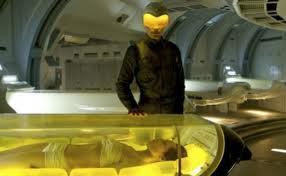 Scott wanted something different, but he liked the basic premise Spaights had come up with in proposing Engineers. Scott asked to rewrite the script and Prometheus was born.
Scott wanted something different, but he liked the basic premise Spaights had come up with in proposing Engineers. Scott asked to rewrite the script and Prometheus was born.
The problem was, neither Spaights nor Lindelof had artistic control, Scott retained the right of veto over key elements of the story, and the script became a patchwork quilt full of conflicting ideas.
After reading Alien Engineers, I can see how several critical concepts got lost in the mix. Spaights, Lindelof and Scott had so many script variations, I think they forgot what was where.
Rather than seeding life on Earth, these engineers tweak life, giving Homo sapiens a boost of intelligence, directing rather than replacing evolution.
Without spoiling the script for those of you that want to read it, one of the early grips in the movie is a scene where our band of intrepid heroes explore the ancient ruins of an alien civilization on the moon of a gas giant, a planetoid with a poisonous atmosphere, but as soon as the team are inside the ruins they’re pulling off their helmets. Remember, this is humanity’s first contact with artifacts devised by an extraterrestrial intelligence and the air outside is noxious but none of the crew seem to mind sucking in the apparently fresh air.
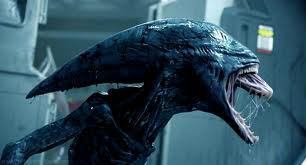 Rather than delivering a WTF? moment, the original script describes how the scientists call the aliens engineers because they recognize the alien ruins circling the moon as “terraforming” machines, vast devices designed to change the planetoid’s atmosphere so it can support life.
Rather than delivering a WTF? moment, the original script describes how the scientists call the aliens engineers because they recognize the alien ruins circling the moon as “terraforming” machines, vast devices designed to change the planetoid’s atmosphere so it can support life.
Inside these hollow structures, the air has already been transformed and a quick test reveals there’s no microbes, so the team take their helmets off.
It’s still wildly implausible, but at least there’s some supporting logic.
I watched the Blu-ray release of Prometheus over the weekend, and the deleted scenes tell the story better than the movie. I guess, sometimes directors and producers can get too close to a project. They should have left these scenes in the movie as they would have helped maintain the suspension of disbelief for the audience.
If you’re interested, Alien Engineers is well worth reading. It’s short, enjoyable, flows smoothly, and would have made a great movie.
Spoiler alert! The script doesn’t have the same contrived ending as the movie, with the engineer being killed by a giant face-hugger, but there’s still the colliding space ships. Shaw is left stranded on the planet, but she’s not too worried, someone will come for her. “Yes, but who,” replies the decapitated android David, and the alien structure lights up, beaming a message to the stars.
If you’re interested in learning more about the differences between the script and the movie, io9 has a good comparison.


November 28, 2012
Is there life on Mars?
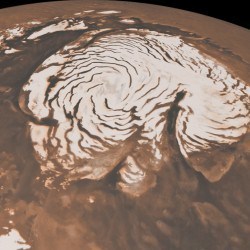 Much to everyone’s surprise, the first few scoops the Mars Curiosity rover took with it’s SAM tool (Sample Analysis at Mars) appears to have uncovered something “interesting,” in the words of NASA officials.
Much to everyone’s surprise, the first few scoops the Mars Curiosity rover took with it’s SAM tool (Sample Analysis at Mars) appears to have uncovered something “interesting,” in the words of NASA officials.
NASA is tight-lipped about the discovery, at first noting it would be “one for the history books,” and then downplaying expectations by saying, “it won’t be earthshaking but it will be interesting.” They’re taking their time to validate their findings, which, despite the suspense, is a good thing.
NASA intend to make their findings public in early December.
The Gas Chromatograph-Mass Spectrometer that’s part of the SAM package is capable of distinguishing organic molecules from simpler naturally occurring molecules.
Is there life on Mars?
I hope so, but I doubt our first, shallow dig in the Martian sandpit will turn up something so significant, although I’d be delighted to learn otherwise.
 In October, the results of a scientific survey of Lake Vida were published by the National Academy of Sciences.
In October, the results of a scientific survey of Lake Vida were published by the National Academy of Sciences.
Lake Vida sits in the dry valleys of McMurdo Sound in Antartica and is a doppelganger for the Northern regions of Mars.
Scientists found life beneath almost a kilometer of frozen ice and permafrost. At temperatures as low as -13C, the extremely salty brine is a slush devoid of oxygen and yet microbes thrive, at least 25 different species of bacteria, protobacteria and firmicutes.
Three independent lines of evidence suggest the age of this enclosed system is 2800 years. This icy reservoir last saw daylight when the Greeks conducted the first Olympics and Homer wrote the Iliad.
 On one hand, the astounding resilience of microbial life on Earth raises the possibility of life thriving in the extremes of Mars, Titan, Europa and Enceladus. On the other hand, it raises some points against the possibility of life in outer space.
On one hand, the astounding resilience of microbial life on Earth raises the possibility of life thriving in the extremes of Mars, Titan, Europa and Enceladus. On the other hand, it raises some points against the possibility of life in outer space.
Lake Vida is an analog for how life could survive in the frigid extremes of outer solar system. And yet it is also highlights the tenacity of Earth microbes over abiogenesis, the ability of life to arise from inorganic matter.
In our limited experience here on Earth it seems once you’ve got life, life is easily propagated, but coming up with life in the first place, well, that’s the tough bit.
All the extremophiles discovered to date are related to other less extreme microbes in the phylogenetic tree of life. Whether we look under glaciers, in the deepest trenches some 11,000 meters beneath the ocean, or in thermal vents that would scorch your hand, all life on Earth is closely related at a genetic level.
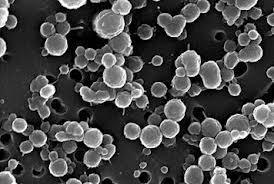 We’re not sure where life originated on Earth, other than that it originated in an absurdly hostile environment almost four billion years ago. Since then, though, life has migrated into every conceivable nook and cranny on Earth, but life never arose again.
We’re not sure where life originated on Earth, other than that it originated in an absurdly hostile environment almost four billion years ago. Since then, though, life has migrated into every conceivable nook and cranny on Earth, but life never arose again.
If other forms of life did arise on Earth, it seems they were overwhelmed by the life we see today and only one form of life has survived.
Physicist Paul Davis is an advocate in the search for a shadow biosphere, as there is the possibility that there are other lifeforms on Earth that have gone undetected up until now, but so far nothing has been found.
As it stands, though, the single, pervasive biosphere we see on Earth weakens the case for life elsewhere, as we don’t see isolated systems like the frozen Antarctic lakes developing their own lifeforms, we see “our” life spreading and thriving in these extreme niches.
 What does all this mean for life on Mars? This doesn’t negate the possibility of life on Mars, but it suggests that if there is life, then like life on Earth, it probably arose under entirely different circumstances and has had to adapt to hang on in the extremes we see there today.
What does all this mean for life on Mars? This doesn’t negate the possibility of life on Mars, but it suggests that if there is life, then like life on Earth, it probably arose under entirely different circumstances and has had to adapt to hang on in the extremes we see there today.
Given how NASA is downplaying the initial excitement around their undisclosed discovery, it seems they may have found some indicators for complex chemistry on Mars, but not organic chemistry, not living chemistry.
This may, however, lead to further discoveries that eventually answer the question about life on Mars in one way or the other.
Let’s see what Santa has in store for us this December.


November 25, 2012
Horrorscopes
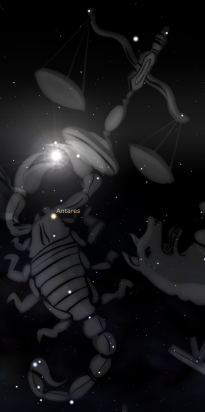 Recently, I was having a beer with some friends and the topic of birthdays arose. Somewhat inevitably, the subject of “birth signs” came up. I was born in October, so (apparently) I was born “in” Libra, and (apparently) that says something profound about me. I beg to differ, but (apparently) that’s a Libran trait as well, so I’ll lay out my case here for your consideration.
Recently, I was having a beer with some friends and the topic of birthdays arose. Somewhat inevitably, the subject of “birth signs” came up. I was born in October, so (apparently) I was born “in” Libra, and (apparently) that says something profound about me. I beg to differ, but (apparently) that’s a Libran trait as well, so I’ll lay out my case here for your consideration.
Our conversation was very much in jest, and light hearted, but it got me thinking about horrorscopes – hmmm, I’m sure I’ve spelt that correctly, but spellcheck doesn’t seem to agree 
Like most good counterfeits, there’s a grain of truth in the base concept behind horrorscopes, and that is that the heavens can be used to track important events. Before the advent of calendars, knowing when to sow seed or when to conduct the harvest was important, and the position of certain stars at at certain times of year became a helpful guide in this regard. But horrorscopes are no more credible than chinese fortune cookies.
For something that has no basis in reality, the whole topic of horoscopes (sp) is hideously complex and convoluted. For the purpose of this blog post, I’m going to go with the simplest version most people are familiar with culturally, that of horoscopes being based loosely on when someone was born.
Zodiac symbols making up constellations outline the earth and create the Zodiac. As they revolve around the earth, the signs become event markers – Daily Horoscopes
The Zodiac does not “revolve around the earth,” rather Earth spins on its axis each day as it revolves around the Sun each year. This statement is five hundred years out of date.
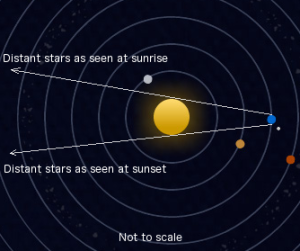 One of the many technical problems with astrology is the notion of constellations of the Zodiac being important around sunrise. Somewhat ironically, this means these stars are furtherest away.
One of the many technical problems with astrology is the notion of constellations of the Zodiac being important around sunrise. Somewhat ironically, this means these stars are furtherest away.
If the constellations of the Zodiac held any influence over our lives, their influence would be less at that time of year, not greater. If anything, they should exert their greatest influence when they appear directly overhead at midnight, as that’s when they’re closest.
But the distances involved are so extreme compared to Earth’s orbit of the sun that our orbit never equates to more than a fraction of the overall distance. Alpha Centauri, as an example, is the closest star outside our solar system. At 25 trillion miles, our orbit around the sun equates to 0.000006% of the distance to Alpha Centauri. If there was any celestial influence over our earthly lives from these stars it would be static and unchanging regardless of where the constellation appeared.
Astrologers use the Zodiac to learn about people’s futures and how they react to life. For them, the Zodiac is the roadmap of people’s lives - Daily Horoscopes
 Such a modest claim for a concept that is as thin as tissue paper. It will come as no surprise to learn there’s no scientific basis to astrology.
Such a modest claim for a concept that is as thin as tissue paper. It will come as no surprise to learn there’s no scientific basis to astrology.
The scientific method is simple. There’s nothing mysterious or mystical about science. Does an idea live up to its claim when scrutinized in detail? In essence, that’s all science is.
The premise that celestial events influence earthly events has been shown to be false.
Astrology fails to recognize that the stars we see appear as though they are all the same distance from us, but this is a line of sight illusion.
Stand on a street and look at the telephone poles stretching into the distance. Those further away appear much closer that those you see next to you even though they’re all evenly spaced. In the same way, two stars may appear close together in a particular constellation but can be separated by a greater depth of distance than two stars that appear to be spread apart in different constellations.
In this image, stars from several Zodiac constellations are clustered relatively close to our sun, while the vast majority of the hundreds of stars making up these constellations (as seen from our perspective on Earth) are thousands of light years away.
A solar-centric perspective destroys the illusion of the Zodiac.
Ah… but it gets worse… You’re probably familiar with these dates
Zodiac Sign
Dates
Aries
The Ram
March 21 to April 20.
Taurus
The Bull
April 21 to May 20.
Gemini
The Twins
May 21 to June 20.
Cancer
The Crab
June 21 to July 21.
Leo
The Lion
July 22 to August 22.
Virgo
The Virgin
August 23 to September 22.
Libra
The Scales
September 23 to October 22.
Scorpio
The Scorpion
October 23 to November 21.
Sagittarius
The Archer
November 22 to December 21.
Capricorn
The Fish-Tailed Goat
December 22 to January 20.
Aquarius
The Water Bearer
January 21 to February 19.
Pisces
The Fish
February 20 to March 20.
The problem is… they’re all wrong.
The Zodiac was drawn up around two thousand years ago, when these dates coincided with the correct location of these constellations in the sky. Since then, the precession of Earth, its slow “wobble” through space, has caused these dates to shift.
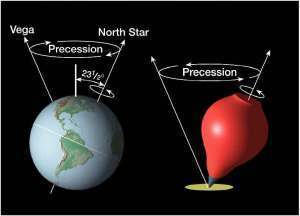 If you’ve never heard of precession it might seem a little obscure, but Earth slowly precesses like a child’s spinning top. Although the top is spinning rapidly, its axis slowly points in a different direction over time.
If you’ve never heard of precession it might seem a little obscure, but Earth slowly precesses like a child’s spinning top. Although the top is spinning rapidly, its axis slowly points in a different direction over time.
Over a period of almost 26,000 years, Earth slowly points at a different point in outer space. Polaris hasn’t always been the pole star and won’t remain the pole star. The celestial north pole will drift as far as Vega due to precession.
Over the past two millennia, the slow precession of the equinoxes has caused the dates assigned to horoscopes to shift by roughly half a month.
Constellation
Original Date
Actual Date
Aries
March 21 – April 20
April 15 – May 15
Taurus
April 21 – May 20
May 16 – June 15
Gemini
May 21 – June 20
June 16 – July 15
Cancer
June 21 – July 21
July 16 – August 15
Leo
July 22 – August 22
August 16 – September 15
Virgo
August 23 – September 22
September 16 – October 15
Libra
September 23 – October 22
October 16 – November 15
Scorpius
October 23 – November 21
November 16 – December 15
Sagittarius
November 22 – December 21
December 16 – January 14
Capricorn
December 22 – January 20
January 15 – February 14
Aquarius
January 21 – February 19
February 15 – March 14
Pisces
February 20 – March 20
March 15 – April 14
And that’s a rather long-winded way of pointing out that rather than being born “in Libra” I was actually born in Virgo… so what does that tell you about me? Hah!


November 16, 2012
In the middle of nowhere
We are in the middle of nowhere, in every sense of the phrase. See that fullstop at the end of the previous sentence? There’s roughly 500,000,000,000 protons in that dot, and this one. As astonishing as that realization is, our little planet orbits one of anywhere up to 400,000,000,000 stars within the Milky Way, and the Milky Way is just one among anywhere from 200,000,000,000 galaxies to potentially a trillion galaxies. And that’s just from what we can see in the observable universe. We’re awash in a vast galactic sea.
The universe is not only queerer than we suppose; it is queerer than we can suppose - J.B.S. Haldane
Let’s put the size of just our solar system in perspective for a moment.
Scale model
Size
Distance
Sun
Basketball
At your feet
Mercury
Stud/sleeper earring
100 feet away
Venus
Chickpea
200 feet away
Earth
Chickpea
270 feet away
Mars
Diamond from an engagement ring
400 feet away
Ceres (asteroid)
Full stop (like this one.)
750 feet away
Jupiter
Baseball
Quarter mile mark
Saturn
Tennis ball
Almost half a mile
Uranus
US Quarter (25c coin)
Just shy of a mile
Neptune
US Quarter (25c coin)
One and a half miles
Pluto
A minus sign (-)
Two miles away
I’m not sure where you are as you read this blog post, but pick a point roughly opposite your current location, somewhere on the far side of the planet, and that’s roughly where you’ll find the nearest star in our basketball scale model.
It’s fair to say, if you were standing behind that basketball you’d struggle to see anything at all. There’s a whole lot of nothing out there. I don’t know how good your eyesight is, but I’d struggle to spot an earring at anything over about 5-10 feet, but certainly not a hundred feet. And as for spotting another basketball 10,000 miles away, well, that gives you some idea of how incredibly radiant stars are.
Looking up at the stars, the universe looks like tiny pinpricks of light, but those bright dots are phenomenally large, and the distances between them are unimaginably vast. On the darkest of nights, you might see 2,500 stars, a mere 0.000000006% of the stars within just the Milky Way.
It’s difficult to grasp the immensity of space and the size of a single galaxy, let alone all the galaxies in the universe. And yet Google has set out to plot the location of 100,000 stars within the Milky Way. Google has launched its star explorer, mapping the 100,000 stars closest to Earth. Even this, though, still only represents 0.00000025% of the stars within our galaxy. To Google’s credit, they’ve depicted the rest of the galaxy graphically, while still allowing you to fly through the 100,000 stars closest to us.
Book One of my novel Galactic Exploration describes the journey of the Serengeti out above the galactic plane, and Google have captured precisely that view.
The specs of light you can see here are not stars, they’re clusters and groupings of stars, each one containing tens of thousands of stars. At this scale, individual stars are not readily apparent and this gives you some idea of the immensity of the challenge faced by SETI, the Search for Extraterrestrial Intelligence. There’s an awful lot of stars to scan.
If you go to the Google 100,000 stars project be sure to hit the play button and take the tour, it’s well worth your time.


November 3, 2012
Science needs you
Recently, I was excited to announce I’d received a postcard from Mars, a photograph of the Martian terrain taken by NASA’s HiRise satellite. It’s not every day you get to influence the targets of a satellite in orbit around another planet, so it was quite a thrill to see NASA take up my suggestion, and I’d like to think I’ve contributed to the body of knowledge documenting the evidence for a watery past on Mars.
 I mentioned this to a friend and they said something to the effect of, “Oh, but you’d know where to look.” Implicit in that was (a) that I somehow know something unique about Mars and (b) that they don’t, or that they couldn’t come up with some interesting geological feature for investigation. Both of these assumptions are wrong. I explained that I was armed with nothing more than amateur curiosity, and that they could find interesting features if they looked, but they weren’t convinced, and that got me thinking about how sometimes we sell ourselves short, especially when it comes to understanding science.
I mentioned this to a friend and they said something to the effect of, “Oh, but you’d know where to look.” Implicit in that was (a) that I somehow know something unique about Mars and (b) that they don’t, or that they couldn’t come up with some interesting geological feature for investigation. Both of these assumptions are wrong. I explained that I was armed with nothing more than amateur curiosity, and that they could find interesting features if they looked, but they weren’t convinced, and that got me thinking about how sometimes we sell ourselves short, especially when it comes to understanding science.
Science needs you.
Seriously, science needs you as much as you and I need science. NASA made the HiRise satellite available publicly through HiWish so we could assist them in the exploration of Mars. I understand that the interface may be a little intimidating at first, but take a look at the areas of interest on Mars. Sign in, create a new suggestion, switch the background to elevation, zoom in, and look at what others have suggested and photographed, and before you know it, you’ll find some small corner of the red planet that no one else has considered.
Citizen science is an exciting way to participate in science projects and gain an appreciation of what science is and how science works. And there’s lots of fun things you can do:
Planet hunters – this is a leisurely way to spend a quiet Sunday morning
Study explosive outbursts from the sun – how cool is that?
Examine the moon’s surface – you’ll be surprised at how much variation there is
Review breast cancer cells for drug efficacy - and help find patterns that reveal potential new treatments and possible cures for cancer. Each slide you look at is someone’s life under the microscope, which is quite humbling.
Consider how ship logs reveal our changing climate – take a first-hand glimpse at how climate records are gathered from the logs of ships from World War II
Help categorize 30 years of cyclones – climate change need not be some aloof, mystical concept if you jump in and help scientists understand the severity of storms over several decades
Listen to whales talk – OK, you’re probably thinking this one is like listening to old Sting records, but by categorizing these calls we can understand what whales are saying to each other. And, no, they’re not saying, “Watch out for the guy eavesdropping with the microphone.”
And there’s more at the zooniverse. Citizen science is all about supporting scientific research by providing a helping hand, helping categorize important information so scientists have hard evidence with which to construct their theories. These theories then help explain the world in which we live and help us improve our quality of life moving forward.
 The breast cancer research is a particularly good example of why citizen science is important, as it is a double-blind review of drug efficacy tests. In an age of quacks and snake-oil salesmen, where everything from coffee enemas to crystals to baking soda have been proposed as “cures,” there is a need for the public to understand that only evidence-based medicine has any value. And as a citizen scientist, you can help gather that evidence.
The breast cancer research is a particularly good example of why citizen science is important, as it is a double-blind review of drug efficacy tests. In an age of quacks and snake-oil salesmen, where everything from coffee enemas to crystals to baking soda have been proposed as “cures,” there is a need for the public to understand that only evidence-based medicine has any value. And as a citizen scientist, you can help gather that evidence.
The phrase “alternative medicine” is a misleading. Panadol is an alternative to Nurofen, Duragesic is an alternative to morphine, but these are medicines to start with, carefully screened and tested, well-understood, with known efficacy.
Baking powder is not an alternative to anything other than yeast in baking.
One site even goes so far as to claim there are “hundreds” of “cures” for cancer but that the “politics of the Cancer industry keeps many of these hidden and forbidden.” Such alarmist, conspiratorial claims mislead thousands of innocent people desperately seeking genuine help.
If there is a conspiracy, it is a conspiracy to eliminate baseless, unproven, irrational and ultimately harmful practices that exploit vulnerable people in an unethical manner.
By participating in the review of double-blind clinical results you are contributing to understanding whether a particular approach to treating cancer is effective or not.
And it’s “double-blind” because the researchers collecting the samples have ensured they’re anonymous so there’s no bias. You too have no idea which patient or which drug results you’re examining. In this way, you can be confident that there’s no bias, no subtle weighting in the outcome. In effect, you are eliminating the possibility of any conspiracy, ensuring a particular therapy is judged on its merits and its merits alone.
If crushed unicorn horns, dissolved pixie wings or whatever other exotic “alternative” concoction passes a double-blind clinical test, wonderful. If not, junk it.
 Scientists are not the high priests of some new mystery religion. There’s no cordoned-off area behind the altar that is the sole domain of the most sacred, holy scientists. Science is for everyone. Participating in a citizen science project can help demystify science for you personally.
Scientists are not the high priests of some new mystery religion. There’s no cordoned-off area behind the altar that is the sole domain of the most sacred, holy scientists. Science is for everyone. Participating in a citizen science project can help demystify science for you personally.
What is science other than your inner two-year old asking, “Why?“
Science is a carefully measured, transparent, testable description of reality. Ever since we were children, we asked questions like, “Why is the sky blue?” At some point, some exasperated adult may have replied, “Just because.” And with those two words, thinking and reasoning were stifled. Science rekindles that interest. Science awakens within us our base sense of awe and discovery about this magnificent universe in which we live. We need to renew that childlike enthusiasm to learn and explore.
Science needs you, but not just to help, to understand.


November 2, 2012
Next
Transylvanian psychological-thriller science fiction writer Veronica Sicoe nominated me to continue The Next Big Thing, where authors talk about their WIP (work-in-progress). I’ve shortened the title to Next, as Big seemed overly ambitious and Thing is already a brilliant science fiction story in its own right.
What is the working title of your book?
Having just launched Monsters a couple of days ago, I’m between projects at the moment, pondering several interesting lines of inquiry for my next book, so I’ll talk about Monsters.
Where did the idea for the book come from?
2012 is the National Year of Reading here in Australia. The slogan love2read captures the essence of the campaign with adroit brevity. Reading is something we take for granted. Public literacy is a relatively modern phenomena and is somewhat understated in society. I’m convinced reading leads to a quiet revolution, but it’s contingent on love, not soppy romance, but a hungry desire for mental callisthenics. As frivolous as Twilight or Harry Potter may be, there’s a very real benefit socially and individually for those that love to read, as their minds are exercised, their imagination inspired, and their sense of pathos is recharged.
Ours is the age of distraction, the age of dilution. Short attention spans are the bane of reading, but for those that love to read, there’s no more exciting time to be alive. In Monsters, I wanted to capture the unique age in which we live by contrasting it to a broken society in which reading was akin to witchcraft.
What genre does your book fall under?
Primarily, it is an action/adventure novel, with a sprinkle of science thrown in for good measure.
Which actors would you chose to play characters in a movie rendition?
I’m rather frugal with character descriptions, describing what a character looks like only if it directly contributes to the mood of a section. I don’t think there’s any description of what either Bruce or his son James actually look like other than that they have beards. The rest is left entirely to the discretion of the reader. In light of that, I’d have to say no-name actors rather than Hollywood stars. I just can’t see Brad Pit or Angelina Jolie fitting the brief.
What is the one-sentence synopsis of your book?
Like most writers, I suffer from prolixity. One sentence? Are you kidding me? What is this? Twitter? OK, here we go…
After the collapse of civilization, reading is lost, readers are persecuted, but one family seeks to restore knowledge, only monsters stand in their way.
Phew…
Will your book be self-published or represented by an agency?
Once, self-publishing was the kiss of death for a professional author, but times have changed as writers like Hugh Howey and Matthew Mather have shown. I’d love to be represented by an agency, but I suspect it’s not as glamourous as it seems and, besides, I’ve done well out of self-publishing, having met people from all over the world through my books, from university biology professors to scientists running coffee shops (damn, that’s got to be a great cup of joe). Writing is holistic, very much about the journey rather than the destination, so I’m OK with being an indie (independent writer/publisher).
How long did it take to write the first draft of your manuscript?
About four months, then another two months revising and editing.
What other books would you compare this story to within your genre?
Wool, Hunger Games and Fahrenheit 451, although I don’t know that I’m doing those novels justice in making such a comparison.
Who or what inspired you to write this book?
My wife and kids. My wife and I read Hunger Games aloud with our girls before seeing it as a movie, tapping into the girls’ excitement for the story. Funny thing was, I’m not a big fan of the first person narrative used in Hunger Games, so I was the one that had to be dragged along.
What else about your book might pique the reader’s interest?
Well, there’s monsters, lots and lots of monsters, and they never attack the same way twice. With each attack you learn more about this fictional future world and how people deal with the stress of no longer being at the apex of the food chain.
Who will you nominate for the next big thing?
I’m going to mix things up and pick writers that are at different stages in their careers as well as in different genres, but they’re all writers I’d like to hear from.
Cristian Mihai
Brian Wells
Matthew Mather
Hugh Howey


October 30, 2012
Monsters love2read
 2012 is the National Year of Reading here in Australia, a campaign by the libraries of Australia to promote literacy under the banner of love2read .
2012 is the National Year of Reading here in Australia, a campaign by the libraries of Australia to promote literacy under the banner of love2read .
I was shocked to learn that 46% of Australians struggle to read a newspaper or to follow a recipe. Although 99% of the population qualify as literate according to the strict definition of being able to read and write to a basic level by the age of 15, almost half the population struggles to read effectively. And so the love2read campaign got me thinking about the role reading has played in forming modern society. Of the various catalysts for change over the past five hundred years, from the Renaissance to the Scientific Revolution, from the Reformation to the Age of Enlightenment, reading has been central to them all.
It’s easy to dismiss reading fiction as a frivolous exercise, irrelevant to modern life, but that fails to appreciate the impact of pathos on the mind of the reader. Like dreams, reading fiction exercises the imagination, which is important for a healthy mind.
Reading seems passive, but it’s not. Reading actively engages the mind, stimulating and provoking thoughts and emotions. Whether it’s science fiction, fantasy, romance, an adventure or a tragedy, books provide us with a place of refuge, somewhere from which we can recharge and engage further with life.
“A reader lives a thousand lives before he dies, said Jojen. The man who never reads lives only one.”
― George R.R. Martin, A Dance With Dragons
`
The central premise in my latest book, Monsters, is that we should not take public literacy for granted because it is a relatively modern development in history, and one that could easily be lost.
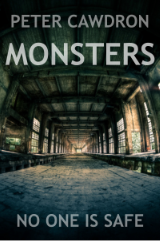 At the time I started writing Monsters, I thought, “Perhaps I’m stretching things too far in this book, beyond the realms of credibility. We could never lose the scientific knowledge upon which our civilization is built, could we?“
At the time I started writing Monsters, I thought, “Perhaps I’m stretching things too far in this book, beyond the realms of credibility. We could never lose the scientific knowledge upon which our civilization is built, could we?“
Since then, I’ve been appauled to hear about the attack on Malala Yousufzai, a 14 year old Pakistani girl who was shot in a cowardly ambush by the Taliban. Her “crime?” Malala wanted other girls to have access to education.
It’s tempting to say, “Oh, how horrible, but that’s in the Third World.” And yet we are not immune from such idiocy in the West. Recently, US Congressman Paul Broun announced that evolution and the Big Bang Theory are “lies” from “the pit of hell.” Although this seems like a comment spoken out of ignorance, Congressman Broun is a doctor of medicine and serves on the state of Georgia’s House Committee on Science, Space and Technology.
In Italy, we have seen scientists convicted as criminals and sentenced to six years in jail for failing to predict an earthquake in L’Aquila. Claudio Eva described the ruling, quite appropriately, as “medieval.”
The appalling reality of the Taliban, political leaders like Paul Broun and the judicial process around the tragedy at L’Aquila make the concept of burning people at the stake suddenly seem not quite so unthinkable. Our hold on scientific and rational thinking is anything but assured. Monsters makes the case that we should consider reading as one of the pillars of modern society.
Monsters
Monsters is a dystopian novel set against the backdrop of the collapse of civilization.
`
The fallout from a passing comet contains a biological pathogen, not a virus or a living organism, just a collection of amino acids, but these cause animals to revert to the age of the mega-fauna, when monsters roamed Earth.
`
Bruce Dobson is a reader. With the fall of civilization, reading has become outlawed. Superstitions prevail, and readers are persecuted like the witches and wizards of old. Bruce and his son James seek to overturn the prejudices of their day and restore the scientific knowledge central to their survival, but monsters lurk in the dark.
`
On a lighter note, a friend’s young daughter overheard I was about to release a new book around my birthday and made me a birthday card in the style of a book cover. I thought you’d enjoy seeing her art work.
Monsters is available on Amazon and Smashwords.
 I hope you love2read
I hope you love2read

October 26, 2012
Science Friction
 Contrary to the common misconception perpetuated on Amazon, science fiction is not in any way related to fantasy.
Contrary to the common misconception perpetuated on Amazon, science fiction is not in any way related to fantasy.
True science fiction is the hypothetical conjecture of how science could, in one form or another, shape the world of the future, and in that regard it is forward thinking.
Science fiction looks to preempt and predict how mankind will adapt to the challenges of the future.
Science fiction classics could loosely be termed science friction in that they agitate and challenge preconceptions. Throughout its brief history, the best loved science fiction stories have been those that dared to challenge the status quo.
George Orwell’s 1984 is, arguably, the greatest science fiction novel ever written.
 Half a century before Skype video chats and Google hangouts, George Orwell saw the danger of our seemingly innocuous video screens with their built-in cameras.
Half a century before Skype video chats and Google hangouts, George Orwell saw the danger of our seemingly innocuous video screens with their built-in cameras.
Thought-police, newspeak and Big Brother became the clarion called that allowed the West to avoid the Stalinist-style abuse of technology portrayed in 1984.
If you’ve read Aleksandr Solzhenitsyn’s Gulag Archipelago you’ll understand this was no idle, misplaced phobia on Orwell’s part. Had Stalin, Hitler or Mao had access to such instruments of surveillance, their repressive, murderous regimes might still be with us.
And yet, a book review in 1949 noted “This may mean that [1984's] greatness is only immediate, its power for us alone, now, in this generation, this decade, this year, that [1984] is doomed to be the pawn of time. Nevertheless it is probable that no other work of this generation has made us desire freedom more earnestly or loathe tyranny with such fulness.” Far from being limited to its day, 1984 stands as a dire warning about the dangers of authoritarian rule for countless generations to come.
 Slaughterhouse-Five is a reactionary tale, written by Kurt Vonnegut, capturing the trauma and senseless waste of war as he experienced it during the Allied fire bombing of Dresden.
Slaughterhouse-Five is a reactionary tale, written by Kurt Vonnegut, capturing the trauma and senseless waste of war as he experienced it during the Allied fire bombing of Dresden.
The book is fictional, but it is also allegorical and biographical, capturing the heartrending futility of death and violence as epitomized by destruction of Dresden. It’s hard to do the history of Dresden justice, needless to say, it was an Allied war crime. This excerpt from a survivor of the bombing conveys the horror Vonnegut witnessed.
Explosion after explosion. It was beyond belief, worse than the blackest nightmare. So many people were horribly burnt and injured. It became more and more difficult to breathe. It was dark and all of us tried to leave this cellar with inconceivable panic. Dead and dying people were trampled upon…
~
We saw the burning street, the falling ruins and the terrible firestorm. My mother covered us with wet blankets and coats she found in a water tub.
~
We saw terrible things: cremated adults shrunk to the size of small children, pieces of arms and legs, dead people, whole families burnt to death, burning people ran to and fro, burnt coaches filled with civilian refugees, dead rescuers and soldiers… and fire everywhere, everywhere fire, and all the time the hot wind of the firestorm [sucked] people back into the burning houses they were trying to escape from.
~
 As a writer, Vonnegut could not ignore the devastation he’d witness in World War II. His protagonist is propelled around in time, chaotically flashing back and forth, capturing the emotional trauma of survivors in an allegorical fashion.
As a writer, Vonnegut could not ignore the devastation he’d witness in World War II. His protagonist is propelled around in time, chaotically flashing back and forth, capturing the emotional trauma of survivors in an allegorical fashion.
In Slaughterhouse-Five he wrote, “It is, in the imagination of combat’s fans, the divinely listless loveplay that follows the orgasm of victory. It is called ‘mopping up.’” In this way, Vonnegut sought to arrest our attention, to ensure the past was not buried and forgotten, to make sure that the lessons were learned, not ignored.
In the words of George Santayana, “Those who do not learn from history are doomed to repeat it.” Vonnegut was determined we should not forget.
Science friction is fiction that wakes us from our lethargy, stirring us to action.
Robert Heinlein wrote several stories in this category. But his classic, Starship Troopers, became a cautionary tale in a way Heinlein never intended.
In Starship Troopers, Heinlein sets out his arguments against communism, the Cold War, and the need for duty to reinforce responsibility, all set against the backdrop of an interstellar conflict with alien bugs.
 Somewhat ironically, the extremist right-wing views he promoted as future social values backfired. Throughout the book his characters debate the weakness of democracy and the need for military service, but the book was published just a few years before the Vietnam war escalated out of control. Starship Troopers became a parody of reality.
Somewhat ironically, the extremist right-wing views he promoted as future social values backfired. Throughout the book his characters debate the weakness of democracy and the need for military service, but the book was published just a few years before the Vietnam war escalated out of control. Starship Troopers became a parody of reality.
The book’s description of society happily accepting life on a war footing became a stark contrast to the socially traumatic events of the 60s. If anything, Heinlein’s vision highlights a fascist extreme the US narrowly avoided.
In 1962, Heinlein wrote Stranger in a Strange Land. With its focus on the formation of a new religion comprised of celebrities, one wonders if he intended his “all worlds religion” as a mockery of scientology.
In stark contrast to Starship Troopers, Heinlein unveils a world of free love, drugs and promiscuity. With themes such as homosexuality, hippies and a fascination with psychic powers, the book preempted the radical movements of the 60s and 70s.
The US Congressional Library named Stranger in a Strange Land as one of a hundred books that helped shape modern America. The stark contrast between Starship Troopers and Stranger in a Strange Land captures the contradiction that was America in the 1960s.
Perhaps the most radical work of science fiction friction is Planet of the Apes.
Although the motivation for the book was originally to highlight cruelty to animals and to challenge the presumption of man’s position at the head of creation, the movie version became a social statement on US racial tensions.
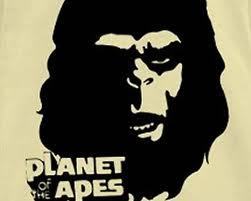 The racial overtones are overt, and clearly not intended just as an analogy for animal cruelty. African-American slavery, segregation and discrimination are subject to a role reversal within the movie, with Charlton Heston appearing very much as a white European slave held in chains. This switch was intended to shock audiences into the realization that racism is unjust.
The racial overtones are overt, and clearly not intended just as an analogy for animal cruelty. African-American slavery, segregation and discrimination are subject to a role reversal within the movie, with Charlton Heston appearing very much as a white European slave held in chains. This switch was intended to shock audiences into the realization that racism is unjust.
White supremacists didn’t miss the point. In supremacist rallies in the late 60s, bigots displayed racist placards decrying what they saw as “Planet of the Apes” resulting from the dissolution of segregation.
In much the same manner, during some of the later movies in the series, black audiences cheered for Caesar, drowning out the movie’s dialogue as they cheered for his rebellion against oppression.
The point of all this is simple: We need mirrors.
We need to see ourselves in a mirror, to see who we are and where we are going in life, and science fiction does that, but not with flashy light-sabres and green muppets. Science fiction shows like Star Trek and Battlestar Galactica are legendary not because they fire photon torpedoes or travel faster than light, they preempted social change. It’s no surprise the first interracial kiss on TV occurred in Star Trek.
Science fiction can easily address topics we would not otherwise talk about. Often, these are the topics we needed to be talking about.
In the words of Rod Serling, creator of The Twilight Zone, “I knew I could get away with Martians saying things Republicans and Democrats couldn’t.“
Science fiction should cause friction, but not to be obnoxious or sensational, to provoke critical thinking.


October 20, 2012
Extremophilephile: loving the unlovable
Extremophile describes organisms that “love” extremes, thriving in environments that would kill most cellular life. Extremophiles are so varied it’s hard to do this category of life justice in a blog post, so here’s just a sprinkling of some of those that catch my eye.
Life is… well, what adjective could accurately describe the versatility and diversity of life on Earth? Remarkable? Astounding? Incredible? Each of these superlatives pales in comparison to the wonder that is biology.
Life never ceases to surprise.
 The discovery of Halicephalobus mephisto, a nematode ‘worm from hell,’ which thrives over two miles beneath the ground, has rewritten the textbooks on the bands within which live can evolve, raising hopes that such a subterranean migration could occur elsewhere on places like Mars or Enceladus.
The discovery of Halicephalobus mephisto, a nematode ‘worm from hell,’ which thrives over two miles beneath the ground, has rewritten the textbooks on the bands within which live can evolve, raising hopes that such a subterranean migration could occur elsewhere on places like Mars or Enceladus.
As [insert superlative here] as mephisto is, the bacteria on which this worm feeds are even more [insert an even stronger superlative here].
Recognized as a species of Firmicutes, this bacteria thrives on molecules produced as a byproduct of the radiation given off by naturally decaying Uranium breaking up water into peroxide. This means that like the bacteria around deep sea thermal vents, these Firmicutes exist independent of the rest of the biosphere.
These Firmicutes have carved out their own ecological niche entirely separate from photosynthesis-driven surface life. If life on Earth was wiped out by radiation from a nearby supernova or a massive asteroid impact, these little critters probably wouldn’t notice.
 Nematodes tend to rate highly on any list of extremophiles because they have adapted to living anywhere from the Antarctic to the deserts of North Africa. When winter closes in on Antartica, these guys do what guys do everywhere when the winter snows start looming, they put some antifreeze in the radiator. Only these guys incorporate antifreeze (glycerol) in their blood.
Nematodes tend to rate highly on any list of extremophiles because they have adapted to living anywhere from the Antarctic to the deserts of North Africa. When winter closes in on Antartica, these guys do what guys do everywhere when the winter snows start looming, they put some antifreeze in the radiator. Only these guys incorporate antifreeze (glycerol) in their blood.
And this party trick isn’t reserved for microscopic creatures, the Antarctic ice fish does the same thing.
Tardigrades, or water bears, are a personal favorite, as these guys are complex creatures capable of being revived after spending a week in outer space, exposed to the harsh vacuum and solar radiation in a low Earth orbit.
Not only that, but tardigrades can be found in the Himalayas, at 20,000 ft above sea level, as well as down to 13,000 ft below the ocean. Tardigrades are exceptional in that they thrive in all extremes, not just in one niche area. They’ve been revived from temperatures as low as almost absolute zero, and can survive at upwards of 300F or 150C.
Like all extremophiles, tardigrades raise the prospect of life potentially existing elsewhere within the extremes of the solar system.
 Deinococcus radiodurans is a bacterium that can survive a thousand times the radiation levels that would kill a human. Scale that up to three thousand times a lethal dose for us, and the survival rate is still over 37% for a given culture of radiodurans. Given how quickly bacteria multiply, this would barely phase the organism.
Deinococcus radiodurans is a bacterium that can survive a thousand times the radiation levels that would kill a human. Scale that up to three thousand times a lethal dose for us, and the survival rate is still over 37% for a given culture of radiodurans. Given how quickly bacteria multiply, this would barely phase the organism.
The surprising thing about radiodurans is that there’s nowhere on Earth that’s naturally exposed to these kind of radiation levels. These are the kinds of radiation levels we see around Jupiter, and that bacteria from the relatively benign third-planet out from the sun could thrive on a Jovian moon bathed in harsh radiation is astounding. In this regard, Io, Ganymede or Europa are suddenly looking quite promising in the hunt for extraterrestrial life.
Speaking of harsh environments, there are bacteria that can survive in hydrochloric acid (ph 1.5-3.5) in the human gut.
There’s even been bacteria revived from ice cores dated at over a hundred thousand years in age, highlighting how hardy microscopic life is in contrast to macroscopic life.
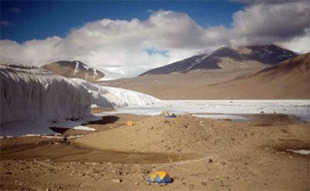 The dry valleys of Antartica, the driest place on Earth, offer a glimpse of the kind of life that could be possible on Mars. There’s little or no ice present in these frozen deserts, while what minuscule rainfall occurs on an annual basis freezes or evaporates within a day.
The dry valleys of Antartica, the driest place on Earth, offer a glimpse of the kind of life that could be possible on Mars. There’s little or no ice present in these frozen deserts, while what minuscule rainfall occurs on an annual basis freezes or evaporates within a day.
With mean temperatures around -35C (-90F), the only significant difference between Antartica and the highlands of Mars is the atmospheric composition and pressure. Fungi and bacteria exist within a few centimeters of the surface. With no appreciable water, they form a thin, dry crust, defying all expectations as to what is required for life to thrive.
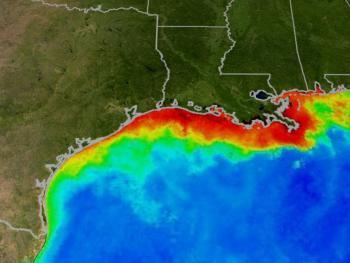 Even apparent “dead zones” on Earth, ocean and lakes starved of oxygen, have evolved anaerobic bacteria.
Even apparent “dead zones” on Earth, ocean and lakes starved of oxygen, have evolved anaerobic bacteria.
The more we look, the more we find life carving out an existence in the harshest environments on Earth.
Given the mechanisms by which Natural Selection drives evolution, and the advantages of specialization in dominating an environmental niche, all this shouldn’t be surprising, but it is carried to an extreme beyond anything we could have imagined, and that bodes well in the search for extraterrestrial life. As nice as it would be to find intelligent aliens, I’d settle for microscopic extraterrestrial life in the first instance, as we would learn so much from such a discovery.
It’s impossible to predict how successful SETI will be in searching for intelligent alien life, and the search for extraterrestrial life within the solar system might not find anything, and yet it may be that given the success of bacteria on Earth, both in terms of longevity, diversity and their tolerance of extremes, that we could find alien microbial life before we hear from ET.
Instead of looking completely implausible, our knowledge of extremophiles on Earth helps us to understand that life elsewhere within our solar system is plausible. I guess that makes NASA scientists extremophilephiles, as they love those organisms that love extremes.



